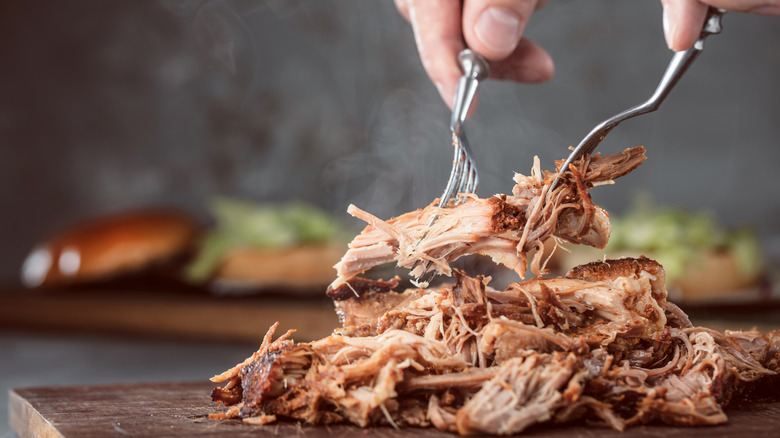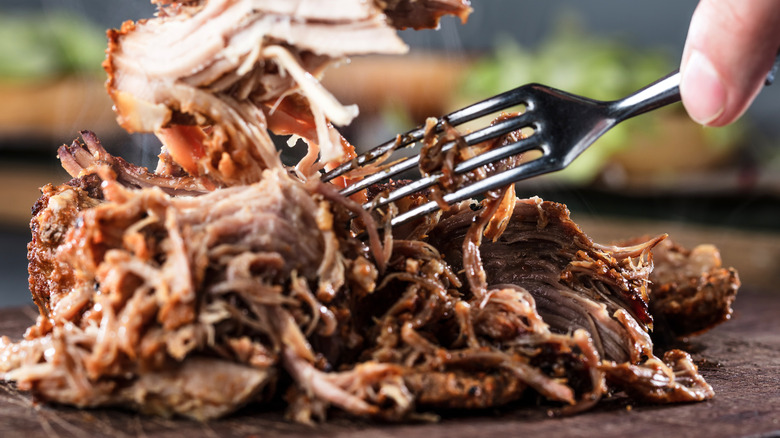The Easiest Way To Avoid Dry Pulled Pork
If you love barbecue, it's likely you've eaten your fair share of pulled pork. Most often made from the shoulder of a pig (a portion of which is also known as a pork butt), pulled pork is a typical BBQ dish that's usually smoked for several hours, or cooked in a low oven or slow cooker, until it's tender enough to shred with forks (via The Spruce Eats). Often coated with a dry rub before cooking and then mixed with any variety of barbecue sauces after the meat is pulled, according to Serious Eats, pulled pork is delicious stuffed into a sandwich or piled beside comfort food classics such as mac and cheese, baked beans, and coleslaw.
If you've ever made pulled pork at home, then you know that the process is fairly easy, requiring very little active preparation: It's mostly just a waiting game until the pork is cooked through. According to HuffPost, since an average pork shoulder weighs between 12 and 16 pounds, and the pork butt portion weighs between six and eight pounds, this can take a while. Pulled pork recipes recommend a cook time of an hour and a half to two hours per pound of meat (via HuffPost). But even though pork shoulder and butt require a low, slow cooking time to turn into tender, glorious meat, they can definitely be overcooked, which will result in dry pulled pork.
Keep meat below 210° for tender pulled pork
The best iterations of pulled pork, the classic barbecue dish made from pork shoulder or pork butt, are moist and meltingly tender, seeming to require hardly any chewing. But we've all probably sampled dry pulled pork in our day, and if you want to avoid turning out tough pulled pork the next time you make some at home, take care not to cook your chosen cut of meat past an internal temperature of 210 degrees Fahrenheit. According to BBQ Host, pork shoulder or butt that is cooked past this temperature will get dry, and no amount of BBQ sauce you mix in afterwards will save it.
The site recommends taking care to cook these cuts to an internal temperature of 200 to 205 degrees, which can be measured using an instant-read thermometer like these options suggested by The Spruce Eats. BBQ Host notes that past those temperatures, pulled pork begins to taste dry as the muscle fibers of the meat toughen up and get chewy. So the next time you're prepping pulled pork for a crowd, make sure you've got your meat thermometer in hand to check that it's just the right temperature.

